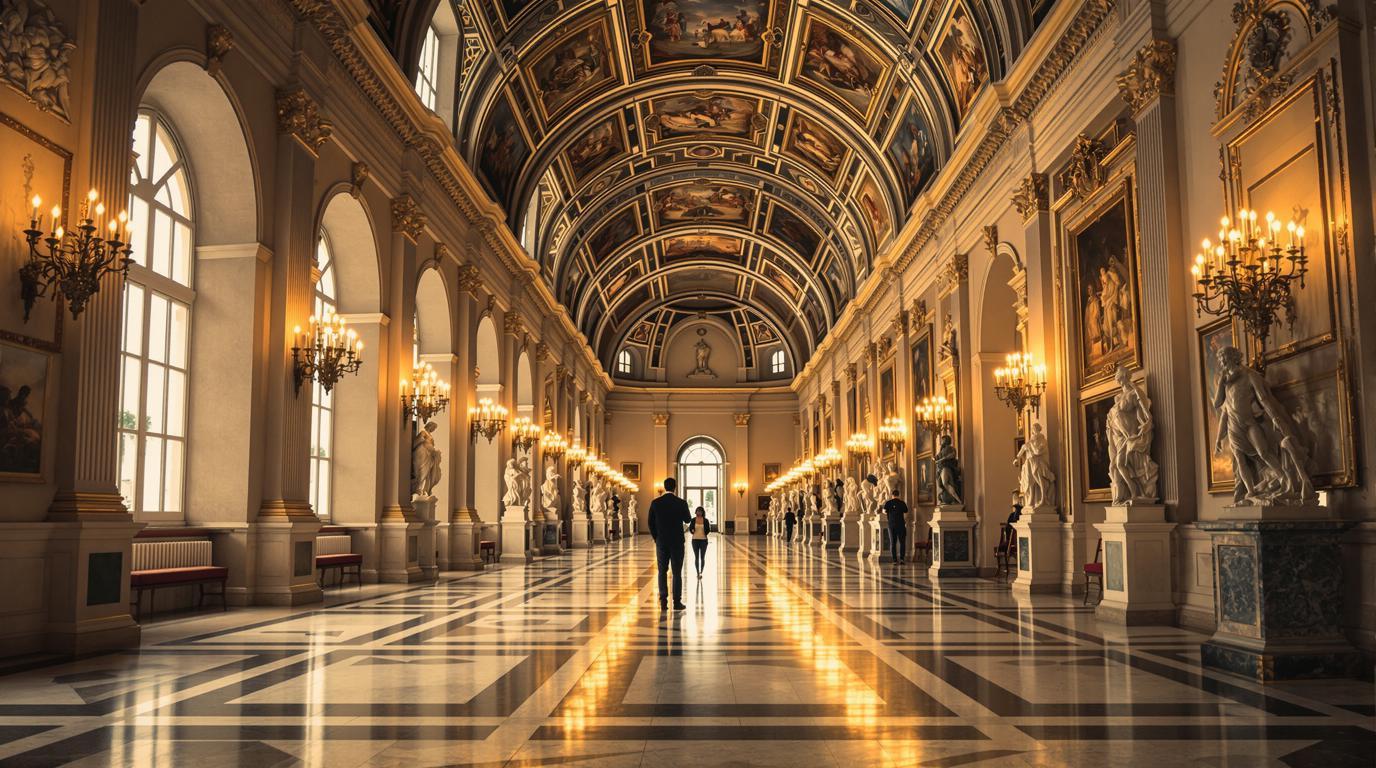Beyond the Mona Lisa: Why the Louvre’s Hidden Corners Offer Paris’s Most Authentic Art Experience in 2025
A palace of 35,000 treasures
The world’s most visited museum isn’t just a building—it’s an entire universe of art. With 8.7 million visitors in 2024 and daily crowds reaching 28,000 people, the Louvre remains Paris’s crown jewel. Yet behind the selfie crowds surrounding the Mona Lisa lies a labyrinth of quieter galleries where art speaks in whispers rather than shouts.
The strategic approach every visitor needs
Forget what you’ve heard about endless lines. While peak season waits average 2 hours and 15 minutes, savvy travelers use Wednesday and Friday evenings (open until 9pm) to slip past the masses. Come 7pm, the grand halls empty dramatically, creating an almost private viewing experience of masterpieces that would otherwise be surrounded by tour groups.
“The Louvre after 7pm feels like your own private museum. The light changes, the crowds thin, and suddenly you’re alone with centuries of genius,” shares Henri Dubois, a museum guide of 15 years.
The wings less traveled
While 70% of visitors make a beeline for the Mona Lisa, the museum’s true treasures hide in plain sight. The Richelieu Wing houses the Napoleon III Apartments, opulent rooms that transport you to 19th-century imperial France—yet remain mysteriously empty even at peak hours. Similarly, discovering hidden gems like the medieval moat beneath the Louvre offers an unexpected journey through time.
The Louvre’s ambitious transformation
By 2031, a €675 million redevelopment project will revolutionize the visitor experience. Most notably, the Mona Lisa will receive her own dedicated space beneath the Cour Carrée, with a separate entrance and ticketing system. For those seeking authentic luxury experiences, this means planning your visit in the next few years offers a unique “before it changed” perspective.
The garden sanctuary
The Tuileries Garden extends the Louvre experience beyond its walls. Open from 7am, these manicured grounds provide a tranquil counterpoint to the museum’s intensity. Early morning visitors often have the garden’s sculptures, fountains, and tree-lined allées almost entirely to themselves—a stark contrast to the massive summer crowds that descend on other Parisian landmarks.
The twilight transformation
As daylight fades, the Louvre undergoes a magical metamorphosis. The glass pyramid, illuminated from within, casts geometric shadows across the courtyard. This nighttime spectacle attracts photographers seeking to capture what many locals consider Paris’s most captivating evening vista, rivaling even spectacular skyline views elsewhere in Europe.
“The Louvre at night is Paris at its most honest—ancient and modern, intimate and grand, all at once,” notes celebrated photographer Marie Clement.
The changing economics
Beginning January 2026, non-EU visitors will face higher entry fees as part of the museum’s sustainable tourism strategy. The current €22 admission will increase substantially, making 2025 potentially the last year to experience this cultural colossus at its current price point—something to consider for travelers planning budget-conscious experiences in Europe.
Beyond art: Architectural marvels
The Louvre’s evolution from medieval fortress to royal palace to world-class museum is written in its very stones. The Salle des Caryatides, with its 16th-century sculptures supporting the ceiling, represents Renaissance France’s artistic awakening. Meanwhile, the controversial yet now-beloved glass pyramid celebrates its 35th anniversary in 2024, a reminder that today’s architectural controversies often become tomorrow’s icons.
Whether you’re mesmerized by the Venus de Milo’s timeless elegance or captivated by the Winged Victory of Samothrace’s dramatic presence, the Louvre transcends simple sightseeing. It’s a place where humanity’s greatest achievements surround you, where beauty speaks across centuries, and where—if you time your visit just right—the weight of history feels wonderfully, impossibly light.
